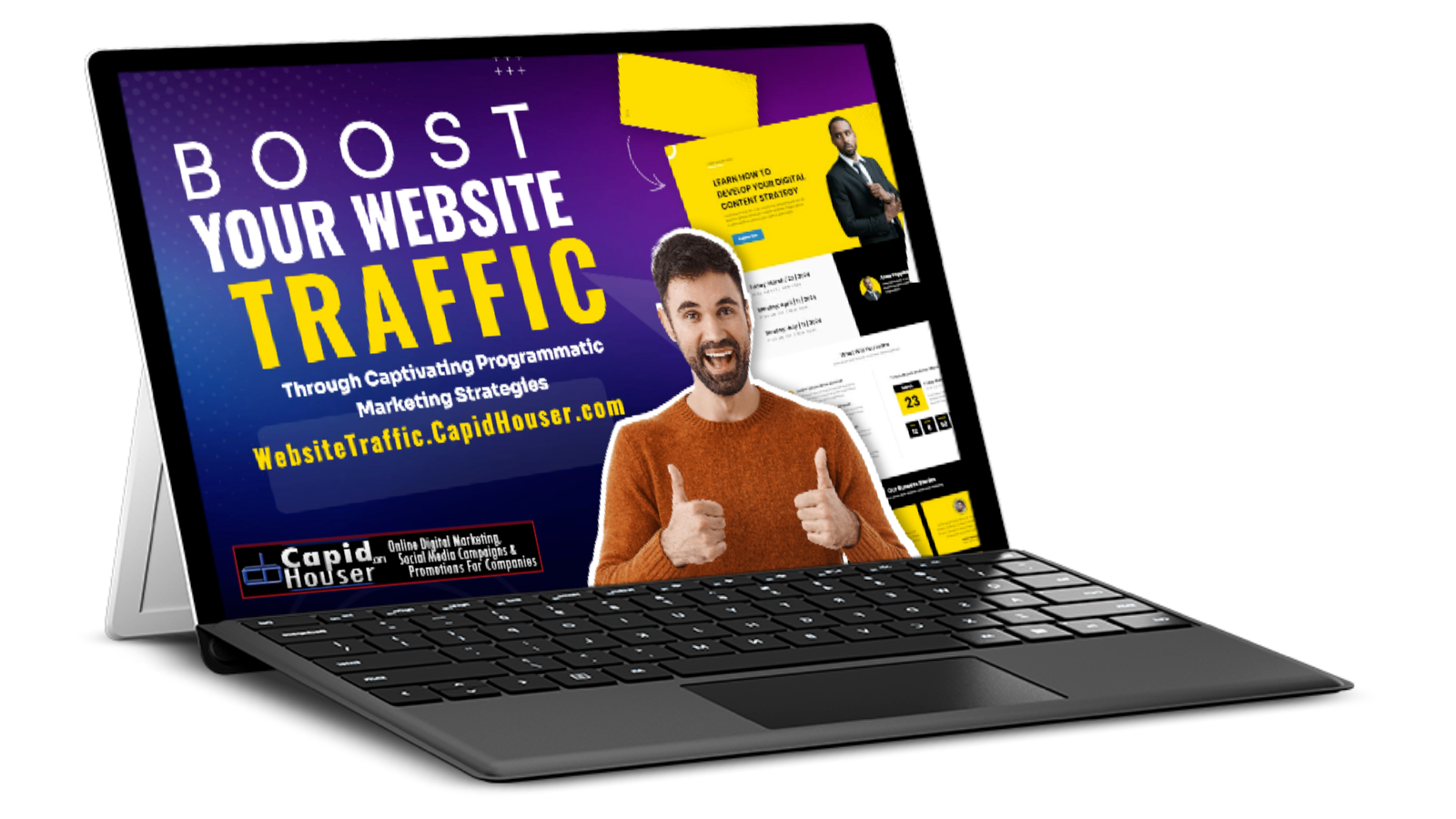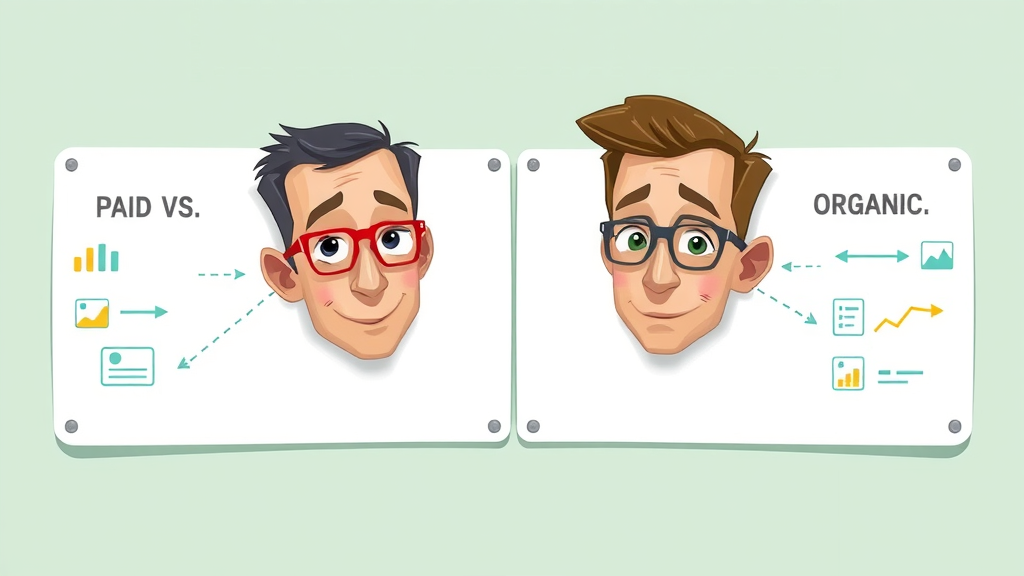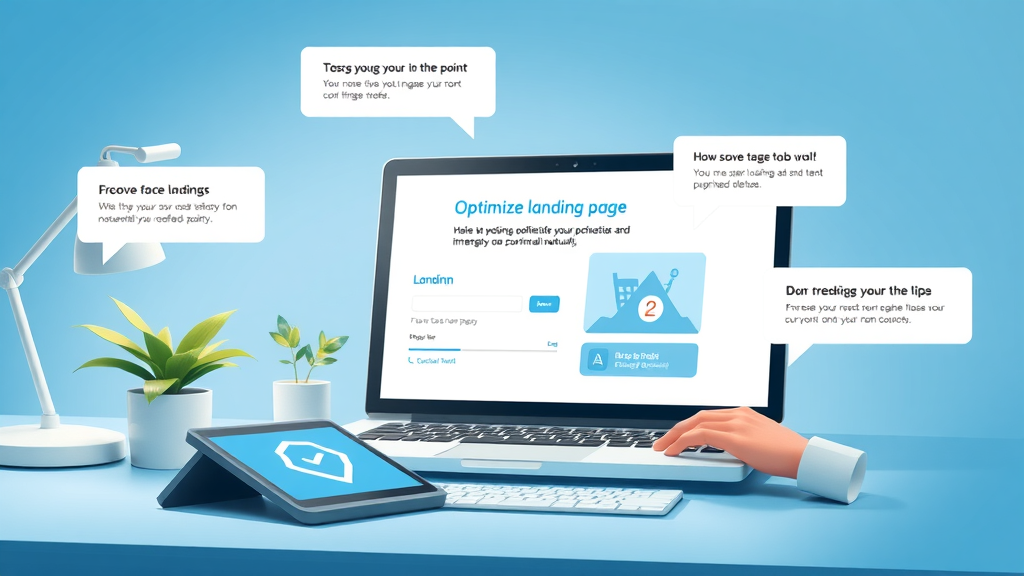Have you ever wondered why your competitors’ websites seem to soar up the rankings and attract floods of visitors overnight while yours inches forward? In today’s fast-paced digital arena, using paid ads for business website traffic can be the secret advantage that propels your brand ahead almost instantly. If you’re ready to harness the power of paid advertising and leave inefficient growth strategies behind, this comprehensive guide is your gateway to amplified website traffic, smarter spending, and measurable business success.
Are You Overlooking the Fastest Way to Skyrocket Website Traffic with Paid Ads?
Discover why paid ad strategies rapidly outperform organic traffic and drive real business results.
For businesses looking to drive traffic to your website and see results fast, paid ads offer a shortcut to visibility that organic methods simply can’t match. While SEO and content creation are fundamental, they often require months of patience. Paid advertising, on the other hand, allows you to appear at the top of search engine results or directly in user feeds – sometimes within hours of campaign launch. Besides speed, these platforms provide advanced targeting capabilities, allowing you to segment by demographics, behaviours, or interests, ensuring every penny contributes to quality website traffic .
With robust analytics, you can tweak campaigns in real-time, maximising your ROI and learning what resonates most with your target audience . Plus, the scalability of paid ads means you can start small and ramp up once you see results, making it ideal for both startups and established brands alike. If you’re not actively investing in paid traffic, you risk falling behind in a competitive digital marketplace where every click counts.
Unlock your business potential: Why use paid ads for business website traffic now?
Purge the myth that paid advertising is only for big budgets or B2C brands. The truth is that nearly every industry can harness paid ads to accelerate growth and compete with giants in their niche. When you choose to use paid ads for business website traffic , you are not only buying visibility but investing in data-driven insights that can sharpen every corner of your digital marketing strategy. Whether it’s targeting high-intent keywords with search ads, engaging specific audiences on social media , or reactivating previous visitors through remarketing, a well-executed paid campaign can transform your online presence and revenue flow overnight.
Beyond visibility, paid ads enable you to test different marketing strategy ideas quickly. For example, imagine launching two separate ads with different calls to action or headlines—within days, you’ll learn which message sparks more clicks and conversions. That feedback loop shapes not just your current campaign, but also future organic efforts and product positioning. Essentially, paid ads give you a sprinting start to strategic business growth.
Understanding Paid Traffic and Its Impact on Website Growth
Explanation of paid traffic vs. organic traffic, relevance to paid advertising and digital marketing objectives.
Paid traffic refers to any website visitors acquired through paid advertising campaigns—think search ads on Google, promoted posts on Facebook, or banners distributed through display networks. Unlike organic traffic , which arrives via unpaid search engine rankings, referrals, or direct visits, paid traffic is the result of a strategic investment in reaching the right users, at the right time, with the right offer.
The distinction between paid and organic traffic is crucial. While organic search builds your website’s authority and stabilises your long-term presence, it’s rarely immediate. Paid ads can flood your site with high-intent visitors who are primed for conversion—think of it as the marketing shortcut you don’t want to ignore. By combining both, you ensure both steady site traffic growth and instant surges when needed.
"While organic reach is a marathon, paid ads are a sprint to visibility – and every business needs both."

Paid ads versus organic traffic: What’s best for your business website?
The debate over paid ads versus organic traffic isn’t about picking a winner—it’s understanding which to leverage when. If you want steady, compounding site traffic with minimal future expense, organic methods (SEO, blogging) are essential. Yet, even the best SEO and content marketing strategies take time to mature. To drive traffic now—launches, sales, new products— paid ads are proven accelerators.
Consider the benefits of both. Organic delivers credibility and trust over time, forming the backbone of your online presence . Paid delivers instant reach, perfect targeting, and measurable outcomes. Most successful businesses blend the two—using paid traffic for launches or high-stakes initiatives, then nurturing ongoing engagement through organic.
What You'll Gain from This Guide on How to Use Paid Ads for Business Website Traffic
Key takeaways on paid traffic, identifying top paid traffic sources, and ROI-focused marketing strategies.
By reading on, you’ll unlock clear strategies for leveraging paid advertising to amplify website traffic and understand exactly where your marketing funds deliver the greatest return. You will learn:
The real differences between paid traffic sources and how they work
ROI-focused marketing tactics that get you the most out of every pound spent
How to track, analyse, and optimise your paid ad campaigns for continuous growth
How this comprehensive approach to paid ad campaigns will increase site traffic fast
This guide takes a step-by-step approach to setting up, running, and scaling paid ad campaigns for maximum impact. From identifying your goals to refining your message, you’ll learn how to launch campaigns that deliver results quickly—whether your focus is reaching new customers, generating leads, or boosting sales. With real-world examples, actionable checklists, and expert insights, you’ll be ready to implement paid ads as a key growth channel for your business website traffic, and stay ahead of the competition.
The Role of Paid Ads in Digital Marketing: Accelerating Website Traffic
Overview of integration with other digital marketing tactics and the synergy between paid advertising and organic traffic.
Paid ads don’t operate in isolation—they complement and uplift every aspect of your digital marketing strategy. When you use paid ads for business website traffic alongside SEO and content marketing , you can reach users at every stage of the buying journey. High-visibility search ads ensure top positioning on search engines when it matters, while retargeting campaigns nurture leads who haven’t yet converted from organic search.
Immediate leads : Paid ads bring instant visitors, perfect for promotions and events
Traffic scalability : Easily ramp spending and volume up or down, adjusting for demand
Robust analytics : Advanced metrics pinpoint which ad versions and traffic sources drive the best results
This synergy means that even if one channel underperforms, your other strategies keep funneling site traffic reliably. Measured together, you get a 360-degree view of marketing ROI and can continuously optimise based on real-time results.

Identifying the Best Paid Traffic Sources for Your Business Website
Comparison of leading platforms: Google Ads, social media paid ads (Facebook, Instagram, LinkedIn), display ads, native ads.
Choosing the right paid traffic source is critical to your campaign’s success. The best platform depends on your business goals, audience, and desired actions. Here’s how the most popular options compare:
Comparison of Paid Traffic Sources | |||
Platform |
Cost |
Audience Targeting |
Typical ROI |
|---|---|---|---|
Google Ads |
Medium-High |
Intent-based keywords, demographics, locations |
High for lead generation, B2B, local |
Facebook/Instagram Ads |
Low-Medium |
Behavioural, interests, retargeting, lookalikes |
High for awareness, B2C, ecommerce |
LinkedIn Ads |
High |
Profession, company size, industry, retargeting |
High for B2B, recruiters, SaaS |
Display Ads (Google Display Network & more) |
Low |
Topics, placements, interest groups |
Medium, best for awareness and remarketing |
Native Ads (Taboola, Outbrain, etc.) |
Low-Medium |
Content-focused, context-based placement |
Medium |
Testing multiple traffic sources allows you to compare performance, test creatives, and maximise your budget’s impact.
Choosing the Right Ad Type: Which Paid Ad Drives Traffic to Your Website Most Effectively?
Breakdown of search ads, display ads, social media ads, and sponsored content. Which delivers the best website traffic for your goals?
Search Ads (like Google Ads): Appear at the top of search engine results when users are actively looking for answers. Ideal for high intent and lead generation.
Display Ads : Visual banners on websites and apps, great for retargeting and broad awareness.
Social Media Paid Ads : Blend seamlessly into feeds, perfect for community engagement, brand building, or targeting interests.
Sponsored Content : Native ads on content platforms that feel less like advertising and more like recommendations.
The right mix depends on your target audience and the behaviour you want to drive. For quick sales, start with search ads. To build awareness or recapture previous visitors, display ads and social media shine. Most successful strategies combine two or more for optimal results.
Leveraging display ads for boosting site traffic
Display ads are powerful for broad exposure and retargeting. By placing visually engaging banners on relevant websites, you can consistently remind potential customers about your product or offer. These ads work best when combined with precise targeting, such as retargeting users who have already visited your site or shown interest in similar products. Plus, modern ad platforms like Google Display Network allow you to track every impression and click, making it easy to see which placements and creatives drive the most site traffic .
The secret lies in smart segmentation – tailoring your creatives and landing pages to each audience segment for the highest conversion. With A/B testing, you can rapidly refine your messaging to increase click-through rate and decrease cost per acquisition.

Planning a Profitable Paid Ad Campaign: Start Driving Website Traffic Efficiently
Step-by-step guide: budgeting, targeting, and selecting paid traffic sources for optimal results.
Set your goals: Awareness, leads, sales?
Define your budget per channel and as overall spend
Identify your target audience with personas and data
Choose your paid traffic sources : Search, social, display, or native?
Draft compelling ad creative tailored for each platform
Design optimised landing pages for each campaign
Launch, monitor, and refine using analytics
Each step plays a crucial role in your campaign’s profitability. Budget too little and you’ll limit data and reach; budget too much, and you risk unprofitable spend. Use ad platform planning tools to balance cost per click (CPC), conversion rate, and projected return.
Setting up your landing pages for paid ad conversion
Your landing page is where visitors decide whether to take action after clicking your ad. To maximise conversions, the landing page must be designed for clarity, speed, and direct relevance to the ad. Essential features include a clear headline that mirrors your ad’s promise, compelling value proposition, strategic use of visuals, and an obvious call to action. Remove distractions—navigation menus, external links, and excessive form fields can all dilute focus and lower conversion rates.
Additionally, make sure your landing page is mobile-friendly and loads quickly, as most paid clicks will come from devices. Regularly A/B test different layouts, headlines, and calls to action to continue improving results and stay ahead of evolving user preferences.

Watch a detailed walkthrough of successful campaigns and strategies.
Observing real businesses executing high-performing paid ad campaigns gives practical insight. For instance, an e-commerce retailer might use Google Shopping Ads to appear for product searches, while a tech startup leverages LinkedIn Ads for quality B2B leads. In both examples, the right choice of traffic source , combined with targeted creative and optimised landing pages, leads to swift, measurable gains in website traffic and revenue.
Maximising Results: Optimising Paid Traffic Source Performance for Your Site
Best practices for refining ad creative, audience segmentation, and tracking key traffic sources.
A/B testing tips
Key metrics to track
How to adjust and pivot your paid ad campaigns
Begin with multiple ad variations (copy, visuals, calls to action) and test them against each other. Track crucial metrics such as click-through rate (CTR), cost per acquisition (CPA), and return on ad spend (ROAS). Use granular audience segmentation—demographics, interests, custom lists—to deliver relevant ads to each group. Don’t hesitate to pause underperforming ads and allocate more funds to proven winners.
"Paid advertising isn’t just about spending – it’s about smart, data-driven investment for traffic growth."
Continue monitoring your campaigns daily and adjust based on current data. The more you experiment, the more laser-focused and profitable your campaigns become.
Measuring Paid Ad Success: Analysing Website Traffic and ROI
Tools and KPIs for tracking paid ad performance, comparing against organic traffic, and demonstrating value.
Key Metrics for Paid Website Traffic Campaigns |
||
Metric |
Description |
Why It Matters |
|---|---|---|
CTR (Click-Through Rate) |
Percentage of people who clicked your ad |
Measures creative effectiveness |
CPA (Cost Per Acquisition) |
Average ad spend per conversion |
Shows efficiency of ad spend |
Conversion Rate |
Percentage of visitors that took desired action |
Key indicator of ad and landing page effectiveness |
ROAS (Return on Ad Spend) |
Revenue generated per £ spent |
Ultimate measure of campaign profitability |
Bounce Rate |
Percentage of ad visitors leaving without interaction |
Highlights issues with landing page relevancy |
Lifetime Value |
Total value a customer brings across their relationship |
Supports long-term budgeting and targeting decisions |
Compare these benchmarks against organic and overall traffic sources to determine channel effectiveness and overall growth.

Do Paid Ads Help SEO and Organic Traffic Growth for Your Website?
Explore the relationship between paid traffic, paid ads and organic traffic, and how campaigns can complement SEO.
"Paid ads can amplify your visibility, providing the foundation for strengthened organic rankings."
While paid ads don’t directly boost your position in search engine results , they can drive high-intent traffic that boosts engagement metrics—such as dwell time and lower bounce rates—that search engines may reward. Campaigns can also be used to test which keywords bring the best results before investing heavily in organic SEO strategies. Over time, the brand visibility earned via paid traffic can lead to more branded searches, backlinks, and social shares—helping your site’s organic presence grow stronger.
Landing Page Essentials: Turning Paid Ad Clicks into Conversions
Optimising landing pages for increased conversion from paid website traffic.
Compelling headline matching your ad
Clear value proposition above the fold
Strong call-to-action (CTA)
Simple, distraction-free design
Relevant, benefit-focused content
Mobile friendly and fast-loading
Trust signals (testimonials, security badges)
Every campaign should have a dedicated landing page optimised for the intended goal—be it collecting leads, selling products, or getting sign-ups. Tailor each element to the audience you’re attracting from your chosen paid traffic source.

Step-by-step video on diagnostics and improvements for current ad campaigns.
An expert audit can pinpoint hidden leaks in your campaigns. By reviewing targeting, creative, bidding, and landing page relevance, you gain actionable insight to boost performance, cut wasted spend, and increase overall website traffic .
Increasing Retargeting & Remarketing Conversions with Paid Ads
How to leverage paid ads for returning visitors, boosting site traffic from new and returning audiences.
Retargeting and remarketing let you reconnect with site visitors who didn’t convert the first time. With tailored ad messaging or special offers, you can gently nudge these potential customers back into your funnel. This approach increases lead quality and lowers your cost per acquisition as you target warm, familiar audiences.
Best remarketing practices for maximising conversion rates
Segment your remarketing audiences by action—product viewed, cart abandoned, blog read—and personalise your ads accordingly. Be mindful of frequency caps so your ads feel helpful, not intrusive. Use urgency, exclusive offers, or tailored content for greater impact. Regularly review your conversion data to fine-tune lists and creative, ensuring you consistently achieve superior conversion rates .

Budgeting for Paid Advertising: How Much Should You Invest to Drive Traffic?
Determining effective budget allocation for paid traffic sources based on your marketing objectives.
Paid Ad Spend Benchmarks by Industry |
||
Industry |
Average CPC |
Recommended Starting Monthly Budget |
|---|---|---|
Retail & E-commerce |
£0.30 – £0.80 |
£500–£2,000 |
B2B/Technology |
£1.00 – £3.50 |
£1,000–£5,000 |
Legal/Professional Services |
£2.00 – £5.00 |
£1,500–£6,000 |
Health & Wellness |
£0.70 – £2.00 |
£800–£3,000 |
Start small, analyse results, and scale as your campaigns become more efficient and return positive ROI. Always factor in cost per acquisition and expected lifetime value.
Common Mistakes When Using Paid Ads for Business Website Traffic
Top mistakes: targeting the wrong audience, weak ad creative, poor landing page experience, insufficient tracking
Even experienced marketers can stumble with paid ads . Common pitfalls include misaligning your targeting (wrong demographics, locations), writing uninspiring or unclear ad copy, neglecting to test or improve landing pages, and failing to set up comprehensive tracking. These errors can drain budgets and limit campaign effectiveness. Always review your campaigns prior to launch—double-check targeting, creative, offer, and set up conversion tracking in analytics.
People Also Ask: How can paid advertising contribute to generating website traffic?
Paid advertising enables businesses to place their website in front of high-intent audiences through platforms like search engines, social media, and display networks, resulting in an instant surge in targeted traffic to your website. The ability to precisely target, bid, and optimise means you can reach potential customers much faster than organic methods alone.
People Also Ask: What type of ad is best for driving website traffic?
The best type of ad for driving website traffic depends on your goals and audience. Search ads (like Google Ads) target users with high intent, while social media ads (Facebook/Instagram) are great for awareness and engagement. Display ads and native ads are ideal for remarketing and broad reach; often, a combination is most effective.
People Also Ask: Do paid ads help SEO?
While paid ads do not directly increase your organic ranking, increased paid traffic can generate signals that support SEO efforts—such as longer dwell times, higher engagement, or more branded searches. Paid ads can also be used to test keywords/topics before pursuing organic campaigns.
People Also Ask: How much traffic does a website need to make money from ads?
The amount of traffic needed to monetise a website depends on your monetisation method (e.g., AdSense, affiliate marketing). Generally, higher quality and targeted traffic from paid ads yields greater returns; for display ad networks, a minimum of several thousand monthly visitors is ideal, while other strategies may require less.
FAQs: Using Paid Ads for Business Website Traffic
Can small businesses compete with large brands in paid ads?
Yes! Paid ad platforms allow for granular targeting and budget control. Focus on niche audiences, specific offers, and highly-relevant creative for maximum efficiency and impact.What metrics matter most when measuring paid ad performance?
Key performance indicators (KPIs) include click-through rate, cost per acquisition, conversion rate, return on ad spend, and bounce rate.Do paid ads work for every industry?
Nearly every industry can benefit from paid ads, but channel selection and creative must align with customer intent. Periodic testing helps determine which platforms work best for your specific market.
Watch this video for expert insights and actionable tips to fine-tune your campaigns and skyrocket website traffic.
By watching optimisation sessions, you gain a behind-the-scenes look at improving bids, creative, and landing pages for significant site traffic gains.
Expert Advice: Quotes from Leading Digital Marketers on Paid Advertising and Website Traffic
"Effective use of paid ads is about learning, testing, and optimising—not just spending." – Marketing Strategist
The consensus among digital marketing leaders is clear: adaptability and ongoing experimentation lead to the most productive campaigns. Track, test, and never stop learning.
Essential Checklist: Launching Your First Paid Ad Campaign for Website Traffic
Define your primary campaign goal
Choose your traffic source and ad type
Set your initial budget
Research and segment your target audience
Draft compelling, relevant ad creative
Build a high-converting landing page
Set up analytics and conversion tracking
Launch and monitor daily for improvement
Action Steps: Getting Started with Paid Ads for Maximum Website Traffic
Identify your website’s key objectives and choose the best paid traffic sources
Build tightly targeted ad campaigns for each product or offer
Track all key metrics and adjust daily to maximise ROI
Regularly A/B test headline, creative, and landing page
Scale campaigns that show positive results
Begin Driving Targeted Website Traffic with Paid Ads Today
Ready to take your business to the next level? Contact us at https://www.capidhouser.com/paid-website-traffic/ to kickstart your Paid Website Traffic campaigns and achieve measurable growth now.
Take action today—launch your first targeted paid ad, track every result, and unlock new growth for your business website traffic immediately.
To effectively drive targeted traffic to your business website, leveraging paid advertising is a strategic approach that offers immediate results and precise audience targeting. For a comprehensive understanding of how to implement paid ads successfully, consider exploring the following resources:
“How to Increase Paid Traffic to Your Website Without Increasing Your Budget” by Similarweb provides insights into maximizing paid traffic efficiency without additional costs. ( similarweb.com )
“The Power of Paid Media: How to Drive Targeted Traffic to Your Website” by Exceptional Media offers strategies for utilizing paid media to attract a specific audience effectively. ( exceptionalmarketing.media )
These articles delve into the benefits of paid advertising, such as immediate visibility, targeted reach, and measurable performance, equipping you with the knowledge to enhance your website’s traffic and overall marketing success.
 Add Row
Add Row  Add
Add 




Write A Comment